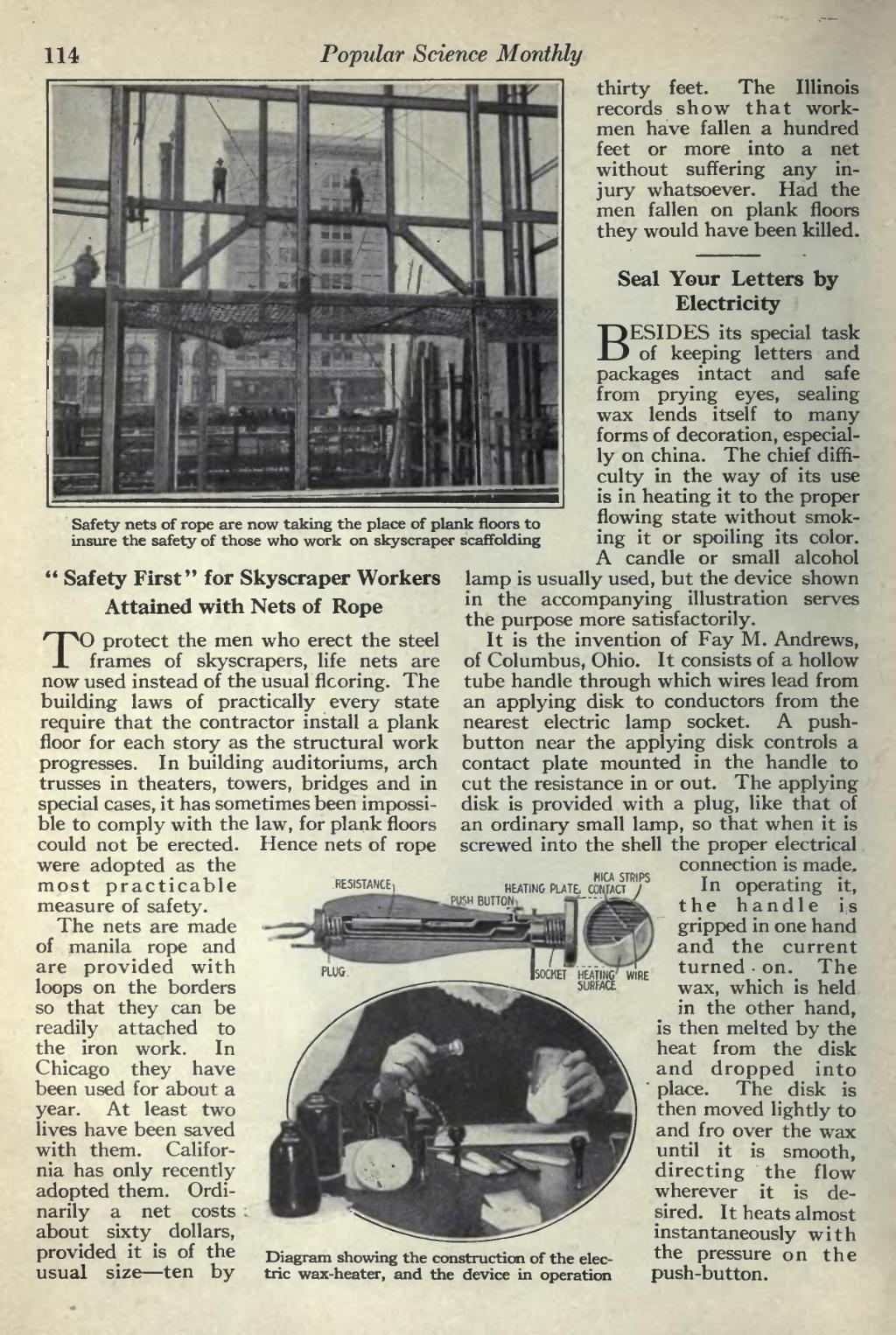114
��Popular Science Monthly
��immmi
��thirty feet. The Illinois records show that work- men have fallen a hundred feet or more into a net without suffering any in- jury whatsoever. Had the men fallen on plank floors they would have been killed.
��Seal Your Letters by Electricity
��B 1
��Safety nets of rope are now taking the place of plank floors to insure the safety of those who work on skyscraper scaffolding
" Safety First" for Skyscraper Workers Attained with Nets of Rope
TO protect the men who erect the steel frames of skyscrapers, life nets are now used instead of the usual flcoring. The building laws of practically every state require that the contractor install a plank floor for each story as the structural work progresses. In building auditoriums, arch trusses in theaters, towers, bridges and in special cases, it has sometimes been impossi- ble to comply with the law, for plank floors could not be erected. Hence nets of rope were adopted as the most practicable measure of safety.
The nets are made of manila rope and are provided with loops on the borders so that they can be readily attached to the iron work. In Chicago they have been used for about a year. At least two lives have been saved with them. Califor- nia has only recently adopted them. Ordi- narily a net costs about sixty dollars,
provided it is of the Diagram showing the construction of the elec- usual size — ten by trie wax-heater, and the device in operation
���ESIDES its special task of keeping letters and packages intact and safe from prying eyes, sealing wax lends itself to many forms of decoration, especial- ly on china. The chief diffi- culty in the way of its use is in heating it to the proper flowing state without smok- ing it or spoiling its color. A candle or small alcohol lamp is usually used, but the device shown in the accompanying illustration serves the purpose more satisfactorily.
It is the invention of Fay M. Andrews, of Columbus, Ohio. It consists of a hollow tube handle through which wires lead from an applying disk to conductors from the nearest electric lamp socket. A push- button near the applying disk controls a contact plate mounted in the handle to cut the resistance in or out. The applying disk is provided with a plug, like that of an ordinary small lamp, so that when it is screwed into the shell the proper electrical connection is made. In operating it, the handle is gripped in one hand and the current turned • on. The wax, which is held in the other hand, is then melted by the heat from the disk and dropped into place. The disk is then moved lightly to and fro over the wax until it is smooth, directing the flow wherever it is de- sired. It heats almost instantaneously with the pressure on the push-button.
�� �
